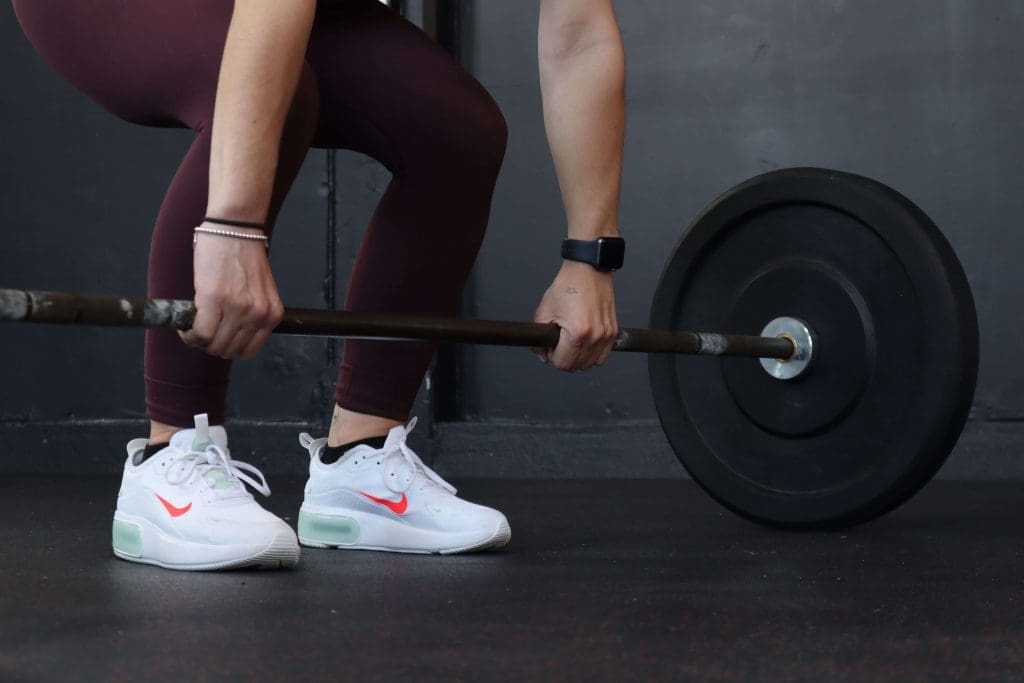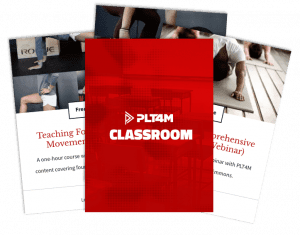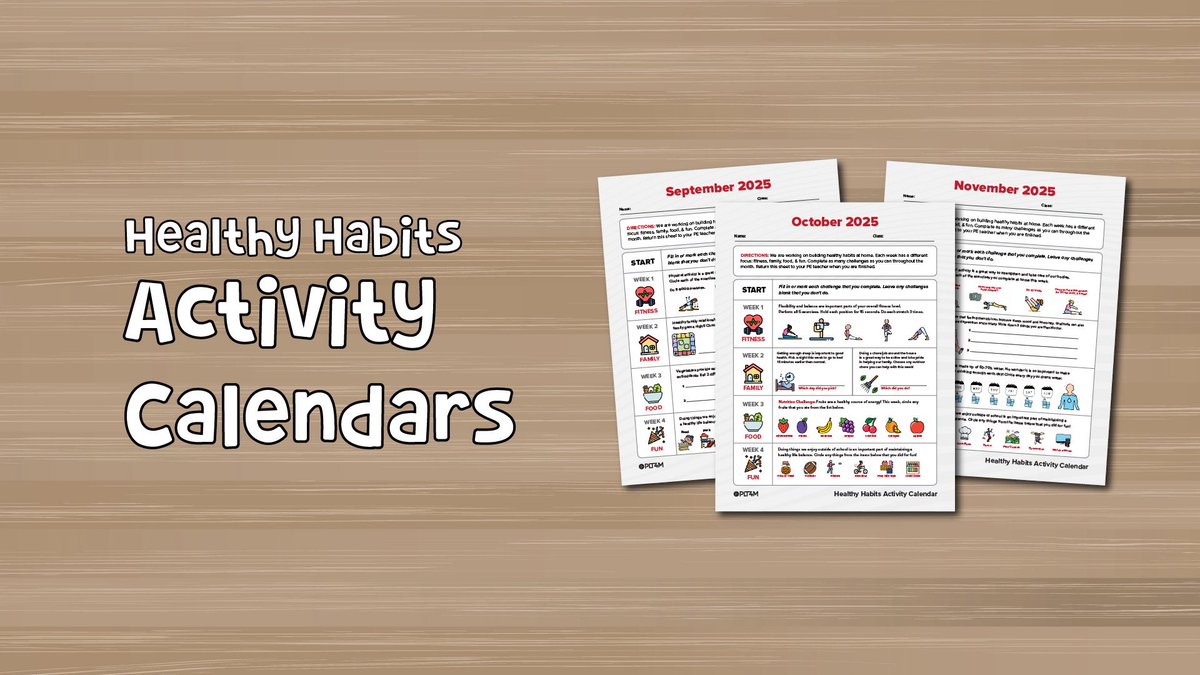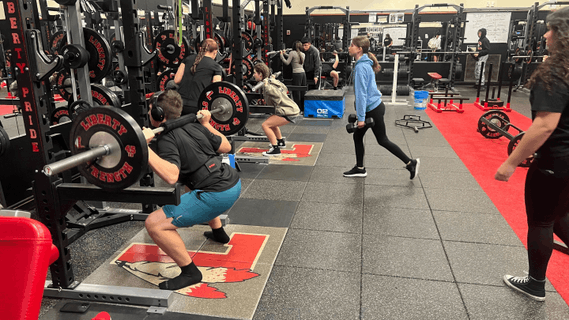With the right deadlift tips and tricks, any student or athlete can perform this movement safely and effectively. While this article explores the deadlift tips and tricks for the barbell deadlift, don’t forget there are all sorts of variations and options of deadlift to choose from. But for now, let’s explore the barbell deadlift!
The Barbell Deadlift
For good reason, the deadlift is beloved by coaches and teachers everywhere. It is an excellent way to develop pure, total body strength as well as reinforce good posture and proper mechanics that relate to many other movements.
Unfortunately, though, the deadlift is also a movement where strength can trump form – it’s too easy to do it the wrong way. You can execute a heavy rep with egregiously poor technique, and we see this far too often with high school students and students who want to move big weight. The result can range from inefficiency to a legitimate risk of injury.
While the deadlift appears to be a relatively simple lift, proper execution often proves far more difficult. Here, we identify just a few of the major coaching points that we use when teaching the lift to any of our students. We are constantly looking to perfect technique in order to maximize gains, while simultaneously minimizing risk.
Free Professional Development For PE
From full courses to on-demand webinars, tap into the PLT4M classroom for continuing education opportunities for physical education teachers.
Deadlift Technique Tips: The Set Up
Often, students have failed the lift before they’ve even begun. Improper set up for the deadlift can result in a host of technical errors during execution. One of the most common issues we see is incorrect hip and shoulder positioning.
Some students set up with super low hip level, much like a squat – others do the opposite, treating it more like an RDL. We want to find the middle ground. With the bar just in front of vertical shins, the athlete’s hips should be above the knee (from a profile view), the shoulders above the hips (and in front of the bar) and gaze at a downward angle (neck in a neutral alignment – no “eyes to the sky” here!).
So, how do we get them there?
First, we instruct our students to “walk themselves under” the bar. We’re looking for them to be standing with feet at no more than hip-width.
Tips for Deadlift # 1 – The Stance
When deadlifting, we want our students to set their feet underneath their hips, with their toes pointed straight ahead, full foot “dug” into the ground. Many students will subconsciously attempt to compensate for poor ankle or hamstring mobility by widening the stance dramatically. This will just result in letting the knees cave during the pull – this is a big “No-No”! To ensure a great stance, tell them to “hop up and down”, they will instinctively bring the feet in to that hip width we are looking for.
Now, we instruct the athlete to “walk themselves under” the bar. We are looking for the athlete to have the bar directly over the middle of the foot. Many students leave the bar our past their feet, ruining the lift from the start. Make sure the laces of the shoe are directly under the barbell and the knees are soft, aka not locked out.
Tips for Deadlift # 2 – Hinge/Torso
Once our stance is set, we must establish our proper back positioning. Our most important goal during the deadlift is to set a neutral spine and maintain it throughout every single rep. Any excessive flexion or extension anywhere in the spine can lead to injury when loading or volume gets heavy.
To set our positioning, we instruct the athlete to place their hands on their thighs, palms down with arms long and loose. Then, we execute a perfect “Good Morning” by pushing the hips back and letting the torso fall forward (like looking out over a cliff) without the knees bending or driving forward at all. We should see a nice “flat” back when looking from the side.
Tips for Deadlift # 3 – Hips
Once the hands reach the knee caps, we engage our entire core to maintain our torso angle and move the hands out to thumb-swiping distance from our thighs. We then settle our hips and shoulders together until we can grasp the bar with our hands in a full grip.
The angle of the back should not change at all! Hips should be above the knees, shoulders above the hips and out over or past the barbell, with chest and eyes facing out and down to the floor.
From here, execution of the lift is all about maintaining core stability and spinal alignment, while generating force into the ground and “pushing” the floor away.
Bonus Deadlift Tips – Modification
For students that are having real difficulty setting up properly, whether it be due to mobility issues or even simple inexperience, we can modify the deadlift to accommodate.
Basically, we will simply shorten the total range of motion of the movement and alleviate the need from ankle/hip mobility by raising the bar further off of the floor. Just place the loaded barbell on small boxes or stacked bumper plates!
Deadlift Technique Tips: The Actual Lift
We then instruct our students to “push the floor away”. This brings the bar up to the knee without changing the angle of the back. We want to keep a nice tight core throughout.
At the knee, we open the hip and reverse the hinge of the good morning movement from earlier. We open only to full extension and no further. We do not want any excessive leaning back at the top.
To return the bar, we repeat the good morning, pushing the hips back as the torso inclines forward. The knees have not bent yet, and the hips stay high. At the knee, we again settle the hips and shoulders and the same pace until the bar is back on the ground.
How To Improve Deadlift Form
At PLT4M, we’re total sticklers for proper deadlift form. We love the lift as a tool for developing raw strength as well as a rigorous reinforcement of core stability, posterior chain mobility, and spinal alignment and posture .
Too often, though, we see young athletes pulling heavy loads off of the ground with sub-par technique or worse. Not only are they sacrificing maximum potential force production with inefficient movement, they are putting themselves at the very real risk of legitimate injury.
In order to combat this risk, we like to spend time with our deadlift tips and tricks drilling our “pulling” technique anytime we get the chance.
Here we have a complete drill for athletes to correct or improve their positions while warming up for heavier loading. With a PVC pipe or empty barbell, perform 5 slow reps of each of the following:
1) Top-Half Deads (Like an RDL, from hip crease to the knee). Focus on pushing the hips back, keeping the bar on the quads, knees remain where they are, lumbar curve maintained.
2) Bottom-Half Deads (mid-shin or ground to the knee). Focus on pushing the floor away, instead of pulling the bar off the ground. Hips and shoulders should rise together, maintaining a good flat back
3) Pausing Deads. Combine the two movements, with a deliberate pause at the knee.
4)Full Deadlifts. Blend both pieces into one fluid movement. Focus on returning the bar the exact same way you pick it up.
Free Professional Development For PE
From full courses to on-demand webinars, tap into the PLT4M classroom for continuing education opportunities for physical education teachers.
Key Takeaways On Deadlift Tips and Tricks
The deadlift is not complicated! That is, until you have to teach it to a room full of beginners. While we all want to help our students and athletes improve deadlift form and fast, we need to take our time in teaching this foundational barbell movement.
While we spent this article talking about the barbell deadlift, there are all sorts of variations that can better prepare students to be pulling weight from the floor safely and effectively.
And if as a teacher or coach you still aren’t totally comfortable with teaching the deadlift, reach out to us! We are here to help and support you in teaching and coaching movements like this one! Check out similar articles like our intro to weightlifting lesson plans article that breaks down the deadlift, squat, and bench press.
As a bonus to the deadlift tips and tricks, below is our Head Performance Coach Max Isaak talking over how to teach the deadlift that you might find helpful!
FAQ
What about the trap bar deadlift?
Check out our podcast on traditional vs trap bar deadlift.
The deadlift has many variations that are used and developed in fitness and strength and conditioning programs. Today, we focus on the similarities and differences between the trap bar and conventional barbell deadlift.
Coach Bres and Doug discuss the history behind the deadlift, why coaches like one or the other deadlift, and how high school programs can apply this knowledge!









